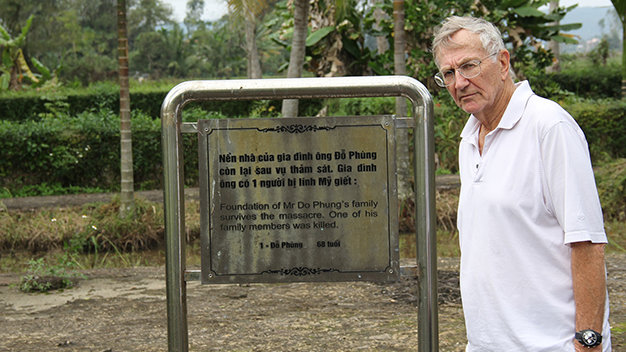Over two weeks ago Seymour Hersh set foot for the first time in Son My in central Vietnam where the massacre of 504 civilians took place 46 years earlier and was eventually revealed in the American and global media by that investigative journalist.
Hersh reported the slaughter in a series of articles sold to Dispatch News Service and run in 33 newspapers in 1969. The series won investigative journalist the Pulitzer Prize in 1970.
The bloodshed is known worldwide as the My Lai Massacre, or Son My Massacre, since it occurred at Son My Relic, also known as My Lai, in Quang Ngai Province's Tinh Khe Commune.
At Son My a little over one fortnight ago, Hersh admitted it was a chance for him to learn first-hand about the massacre.
He recalled how he was able to investigate the massacre and write a series of stories about it without actually visiting the Southeast Asian nation.The Pulitzer Prize to honor the truth
He told Tuoi Tre (Youth) newspaper during his two-day visit to Son My on December 19-20 that American people are responsible for the tragedy and they should visit places like this to realize how a mistake can leave lasting pain for many people.
“It is unforgivable and I hope the mistake will never be repeated in the future,” he said.
“I’ve never wanted to talk about my investigation, but today, I can tell you, Vietnamese people, the story of how I could find the truth,” Hersh revealed.
He recollected that he had talked with former United States Army photographer Ron Haeberle, whose job in Vietnam was to take photographs of dead Vietnamese to report the ‘achievements’ of American troops.
Through Haeberle, Hersh learned that around 140 U.S. soldiers from Bravo Company, Alpha Company, and Charlie Company took part in the killings of 504 civilians in Son My.
The soldiers were assigned to find Viet Cong in Son My but they turned their guns on unarmed civilians, mostly women and children, Hersh said.
“I started investigating after hearing the story,” the journalist said.
He said he met and interviewed over 50 soldiers who took part in the infamous carnage on March 16, 1968.
“I reminded them of images of coconut trees in Vietnam and the coconut trees in Son My before going deeper into details of the killings,” he recalled. “And the truth was uncovered.”
He said he has traveled around the world and received many prizes but the Pulitzer Prize in 1970 is the most valuable one for him because it was the prize for a horrific truth.
He said he had never visited Vietnam before but he felt close to the country. He felt as if he had witnessed the massacre in Son My, even though he only heard about it.
Hersh told Son My locals that he had not feared any influence while investigating the slaughter.
“I held the truth in my hand and I wanted the American people to know about it,” he insisted.
Forty-five years after exposing the massacre, the journalist finally visited the area where it took place and was given a warm welcome by local residents.
Nguyen Dang Vu, director of the Department of Culture, Sports, and Tourism of Quang Ngai Province, said, “It’s meaningful to receive the visit of the American journalist Seymour Hersh.
“His contribution was to expose the truth of the massacre of 504 civilians in Son My to peace lovers across the world.”
Generous people
Nguyen Thanh Cong, director of the Son My Relic and the only survivor of the massacre in 1968, added, “Seymour Hersh is an indispensable part of this land. We are happy to receive him.
“We have long wished to meet this American man.”
Accompanying the journalist to Son My were his wife Elizabeth and his two children.
“I know that Vietnamese people are friendly and kind-hearted,” Hersh said when he was at the relic. He attentively watched films, photographs, and statues displayed there.
The man admitted he felt guilty as an American citizen on learning of the massacre. However, the friendly attitude of locals helped him relieve his psychological burden.
The journalist also revealed his plan to write more stories about Vietnam.
The stories are meant not to arouse pain but to tell the world that Vietnamese people, who have experienced several wars, are not living with hatred from the past but are looking toward the future with love for peace.
Seymour Hersh, born in 1937, is an American investigative journalist and author based in Washington, D.C. He is a regular contributor to The New Yorker magazine on military and security matters.
Like us on Facebook or follow us on Twitter to get the latest news about Vietnam!






















































